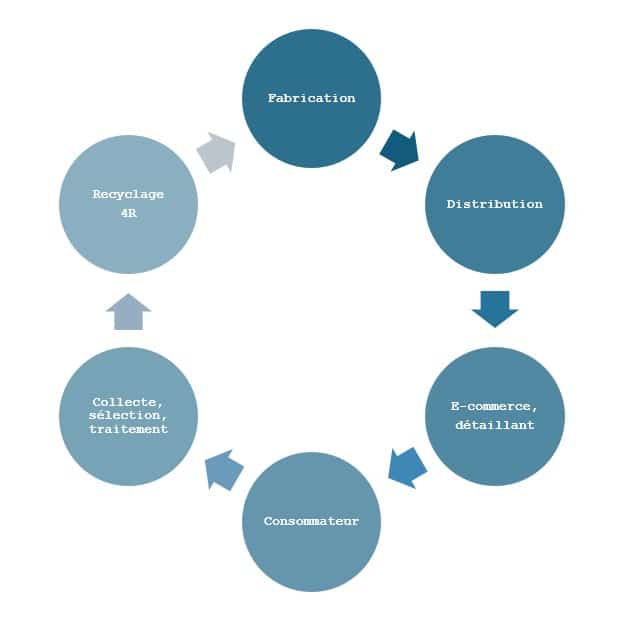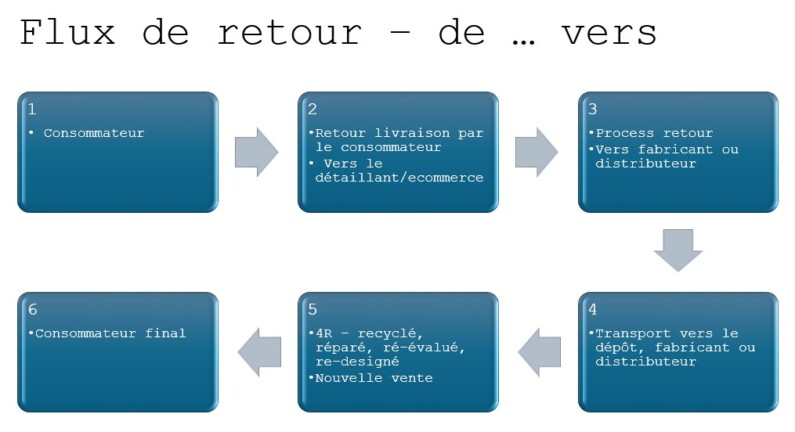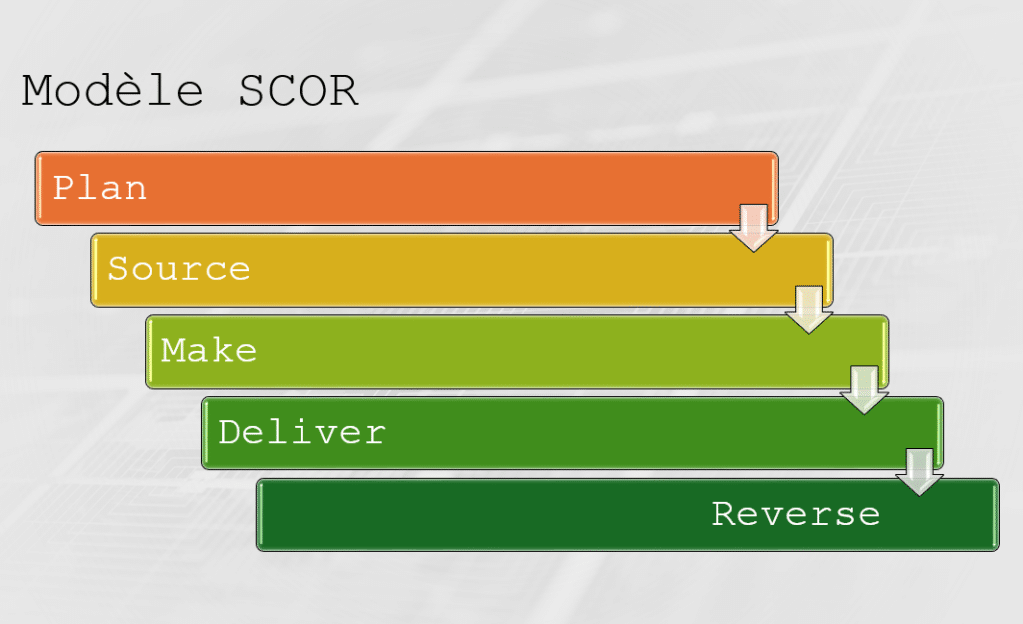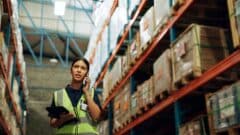Reverse logistics may seem incongruous or pointless to you, but it's nothing of the sort. In fact, when properly developed, this approach is a source of benefits for everyone involved in the supply chain: from the e-tailer to the warehouse manager, right through to the customer.'to the end customer. It can even become a real asset in terms of differentiation and CSR satisfaction. So what exactly is reverse logistics? How can you make the most of it? How to reconcile CSR and e-commerce issues? Muriel Guillemot, purchasing expert, explains the process.

Thinking about what it takes to have a successful e-commerce strategy? You might spontaneously think of assets such as a multi-channel approach or solid B-to-C relationships. But you're overlooking an essential aspect: reverse logistics.
Poorly managed, it can cause major damage to your business: systematic delays in returns or poor stock management. But used properly, it can also be a real springboard for boosting customer satisfaction. Visit reverse logistics is the result of processes and methods designed to govern the return of goods from points of sale.

The idea? For the manufacturer to be able to repair, recycle or destroy them at a lower cost while remaining competitive.

Reverse logistics: why apply it to the supply chain?
In the field of supply chainThe usual approach is to think in terms of return on investment. Why is this? Firstly, because calculating customer satisfaction is not always straightforward. Secondly, because the financial dimension of returns management is crucial if we are to operate effectively and efficiently.
Reverse logistics is becoming increasingly complex because of the different players in the supply chain: B to B, B to C or C to B). Added to this is the tightening of regulations: environmental standards and the Hamon law, which sets out the rules for consumers.
Environmental standards
For example:
- ISO 14001 standard (environmental management)
- European directive on waste electrical and electronic equipment (WEEE)
- ISO 18004 standard (implementation of a management system for social responsibility in the context of product returns)
Hamon law
For example:
- Refunds on products returned within 14 days
- Clear information to the consumer by the seller on its return policy, including return costs
The application of reverse logistics in the supply chain must therefore begin by taking into account the so-called 4Rs:
- To recycle
- Repair
- Re-evaluate
- Re-design
Why is it worth calculating CSR satisfaction?
These new challenges have become a priority for many companies who want to meet customer satisfaction, the basis of CSR, which is becoming a business model in its own right.
CSR (Corporate Social Responsibility) is about putting sustainable development into practice at company level.
For the latter, it means making an effort to improve the quality of life. protection from environmental and social issues.
CSR and customer satisfaction are linked because CSR practices can help a company to :
1. Meeting customer expectations
2. Improve the quality of its products and services
3. Strengthen your brand image
4. Engage stakeholders and have a positive impact on society and the environment
To remain competitive, companies have had to develop new strategies such as reverse logistics. In other words: returns management.
A necessary strategy: product returns are reaching record levels. In 2022, retailers had to process 13 billion returns (Deloitte study). This represents 573 billion dollars in one year. In the e-commerce sector, this is a 4-fold increase on 2018. This development could enable companies to :
- better understand customer behavior
- to better understand and personalise their products to meet the needs of the consumer of 2024
[Also read] How can you optimise your e-commerce logistics?
How do you calculate CSR satisfaction?
There are two possibilities:
1/ By calculating the return on investment (ROI). In other words, comparing the budget invested with the financial benefits it has generated.
2/ By calculating the return on expectations (ROE).
ROI and ROE can be used to assess the performance of reverse logistics from different angles. ROI provides information on financial performance, while ROE focuses on performance in relation to expectations and initial objectives.
Together, these measures can provide a complete picture of the value and impact of reverse logistics.
The ROI calculation lends itself to the "simplest" cases: in other words, there is a free, flexible returns policy. For example: the management of returns by the world leader in e-commerce is an element of differentiation. L'predictive analysisAmong other technologies, this enables it to anticipate returns.
ROE calculations are useful in the most complex cases. Distancing itself from the purely quantitative approach of ROI, it places greater emphasis on the strategic objectives of returns, i.e. the change desired by the end customer. According to this measure, an investment in returns management is considered relevant if it can be seen, after the event, that the change targeted by the strategic objective has actually taken place.
Thus, taking ROE into account implies both :
- Define the assessment methods at the same time as the objectives SCOR (supply chain reference model).
- Choose the indicators that will enable you to calculate ROE and analyse your approach to returns.
- Communicate regularly and share data (sales trends, inventory levels and product performance) with suppliers on expectations and objectives.
- Implement flexible delivery policies with express delivery options

Does reverse logistics always rhyme with CSR satisfaction?
But when can we say that CSR satisfaction in reverse logistics represents a good ROI? In the absence of potential revenue, we need to think in terms of savings on expenditure with indicators linked to preexisting.
For example:
- number of parcels returned
- return time
- time to take charge
- recycling percentage 4 R
If the need is recurrent and concerns a large number of returns, L'Initial investment will be amortized over the medium or long term. All you have to do is prioritise the CSR dimension (circular economy, for example) and customer satisfaction at the same time.
How can you improve the ROI of your reverse logistics?
Data needs to be collected and analysed so that corrective action can be taken if necessary.
For example:
- Le inventory turnover rate Stock turnover rate: this rate indicates the extent to which stocks are renewed. If you have a high turnover rate, this indicates effective stock management.
- Le customer service rate which shows the supply chain's ability to respond quickly to your customers' requests. In other words, the accuracy of orders or the speed of service. For example, you can use a CRM to efficiently manage returns and refunds.
- Le customer satisfaction level to define the overall quality of products and services using online evaluations, customer feedback or satisfaction surveys.
- Or even the level of compliance with regulations and quality standards.
One thing's for sure at this stage: don't leave this step to one side! When you meet someone for the first time, they form an image of you in a matter of seconds. It's the same for your company. And this image will be virtually permanent. It takes six months to erase that first impression. Six months is a long time. And it's almost irreversible if you've left a bad impression. That's why reverse logistics is a highly effective way of standing out from your peers and promoting your difference in your field.
And to avoid making any mistakes, you can turn to training. Organize and optimize your e-commerce logistics.
Stand out from the competition with reverse logistics - a guarantee of customer satisfaction!





